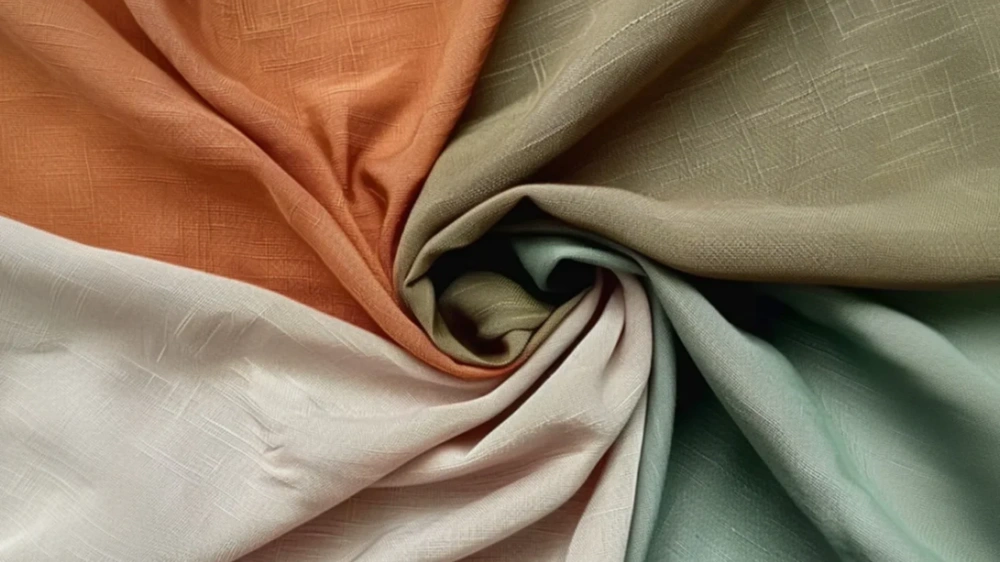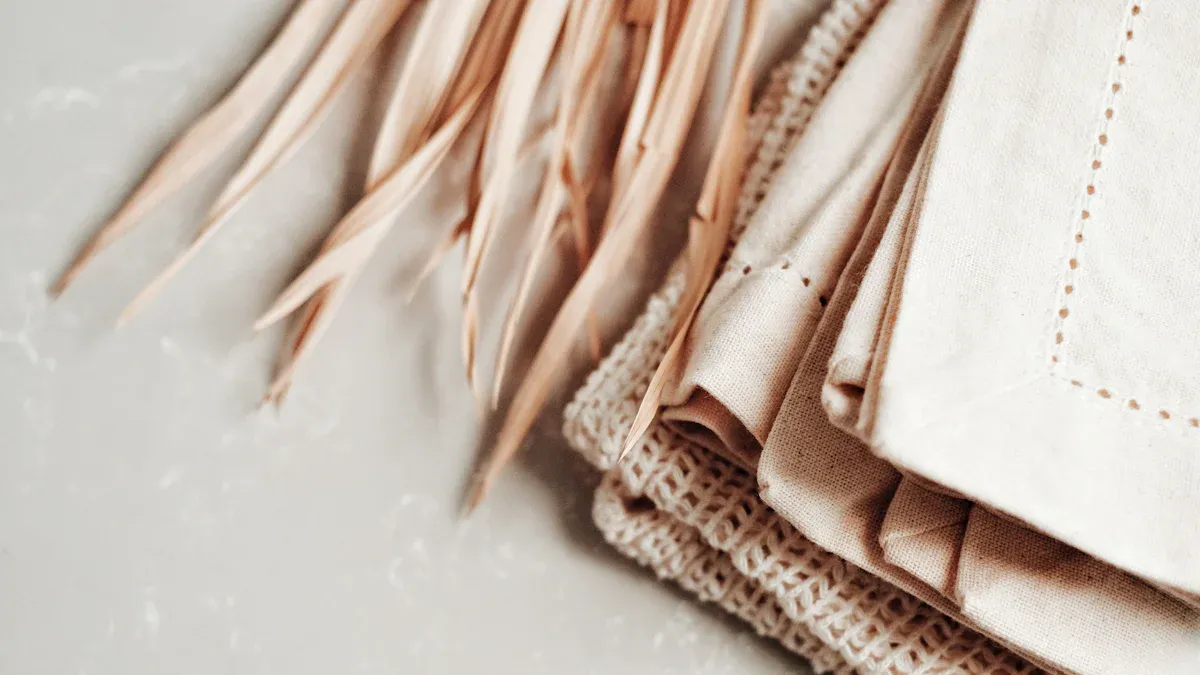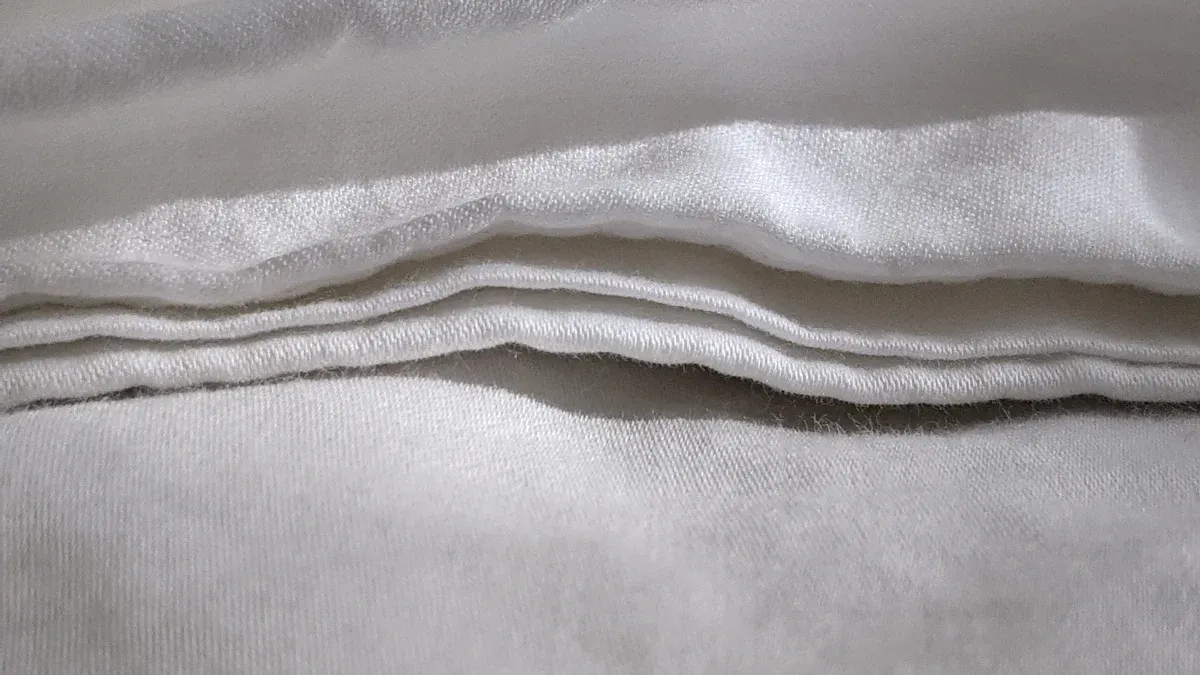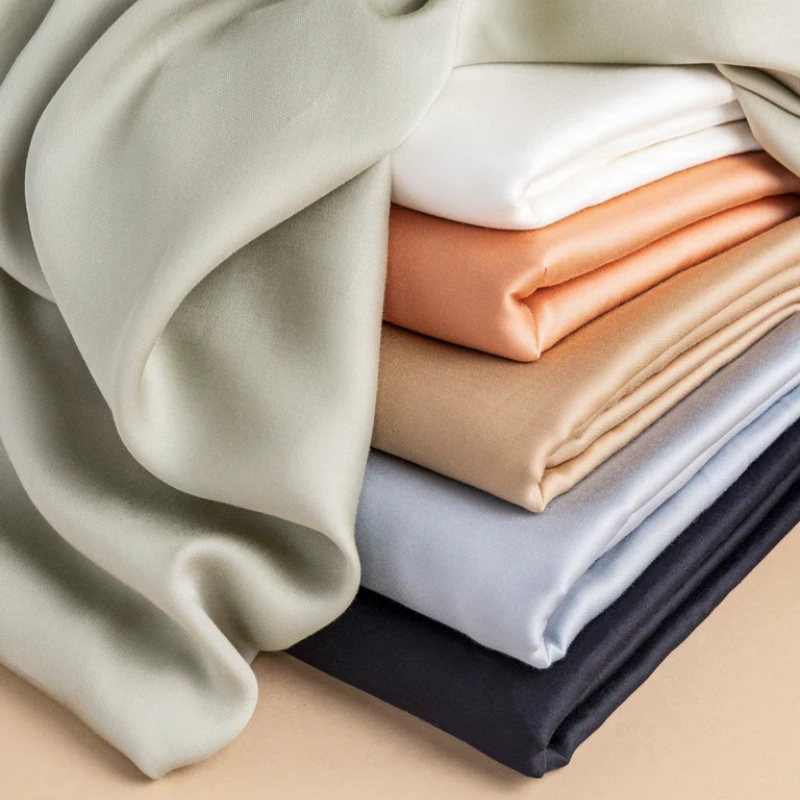
You might wonder, is viscose a sustainable fabric or just another example of greenwashing? Viscose comes from plant sources, which sounds eco-friendly at first. However, you may hear mixed messages about its sustainability. On one hand, viscose uses renewable resources.
On the other hand, the way companies produce viscose can raise big concerns about pollution, deforestation, and ethics. When you shop, it helps to know what viscose, a sustainable fabric, actually means for the planet.
Key Takeaways
Viscose is made from wood pulp but uses many chemicals, so it is not fully natural.
Viscose production can cause deforestation, pollution, and health risks for workers.
Look for certifications like FSC and EcoVero to find truly sustainable viscose fabrics.
Closed-loop production recycles chemicals and water, making viscose more eco-friendly.
Compared to cotton and polyester, viscose uses less land and breaks down faster in nature.
Is Viscose a Sustainable Fabric
What Is Viscose
You might see viscose on clothing labels and wonder what it actually is. Viscose is a type of rayon, which means it is a manmade cellulosic fiber. You get viscose fabric from wood pulp, usually from trees like beech, pine, or eucalyptus. The process starts with turning wood chips into pulp using chemicals.
Then, factories treat the pulp with sodium hydroxide and carbon disulfide. This creates a thick, honey-like liquid called viscose. Workers filter, spin, and wash this liquid to make soft, shiny threads. These threads become the fabric you see in stores.
Here’s a quick look at how viscose is made:
Factories dissolve wood chips in sodium hydroxide to make pulp.
They press and shred the pulp into crumbs.
Workers treat the crumbs with carbon disulfide.
The mixture dissolves in sulfuric acid, forming a viscous solution.
This solution gets filtered, spun into threads, and woven into viscose fabric.
Viscose first appeared in 1883 as a cheaper alternative to silk. People sometimes call it “artificial silk” because it feels smooth and drapes well. Today, you find viscose in everything from dresses to sportswear. It is popular because it is soft, breathable, and affordable.
Note: Even though viscose comes from plants, it is not a natural fiber like cotton or linen. The heavy use of chemicals makes it semi-synthetic.
Why Sustainability Is Debated
You may hear people say viscose is eco-friendly because it starts with trees. But is viscose a sustainable fabric? The answer is not so simple. The way companies make viscose can cause big problems for the environment and for people.
Let’s break down the main reasons why the sustainability of viscose fabric is hotly debated:
Deforestation: Over 200 million trees are cut down every year for viscose production. Some of these trees come from ancient forests, which are home to rare animals and plants. Groups like Canopy warn that viscose production can destroy habitats and even force indigenous people off their land.
Chemical Pollution: Factories use toxic chemicals like carbon disulfide and sulfuric acid to make viscose. These chemicals can leak into rivers and lakes, poisoning water and harming local communities. Reports from the Changing Markets Foundation show that some factories in Indonesia, China, and India have caused serious pollution and health problems.
Worker Health Risks: Making viscose is dangerous for workers. Exposure to carbon disulfide can cause nerve damage, heart disease, and even blindness. Studies and books like “Fake Silk” document these health risks.
Water and Waste: Producing one ton of viscose uses about 30 tons of water. If factories do not treat their wastewater, it can pollute the environment even more.
Greenwashing: Many brands claim their viscose is sustainable, but less than 30% is actually made from responsibly sourced wood or with safer methods. Most viscose on the market does not meet strict eco-friendly standards.
Here’s a quick table to compare some key facts:
Issue | Viscose Fabric Impact |
|---|---|
Deforestation | 200+ million trees logged yearly |
Chemical Use | Toxic chemicals harm people & nature |
Water Consumption | 30 tons of water per ton of viscose |
Worker Health | High risk of nerve and heart problems |
Biodegradability | Breaks down in 4-6 months |
🌱 If you want truly sustainable viscose, look for brands that use closed-loop systems and certified wood pulp. Most viscose fabric on the market does not meet these standards.
So, is viscose a sustainable fabric? It depends on how it is made. Some companies use better methods and get certified, but most viscose still causes pollution and deforestation.
The debate continues because the industry is slow to change, and many brands use greenwashing to make their products sound more eco-friendly than they really are. If you care about sustainability, you need to look beyond the label and ask questions about how your clothes are made.
Environmental Impact

Deforestation
When you think about the environmental impact of viscose, deforestation stands out as a major concern. Viscose comes from wood pulp, so companies need lots of trees to keep up with demand. Some brands work with groups like Canopy to make sure they do not source wood from ancient or endangered forests. Reports from Stand.
Earth shows that many companies now use special rankings to guide their choices and set clear goals for forest protection. Still, not every company follows these best practices. The Rainforest Action Network has linked some pulp suppliers to ongoing deforestation in places like Indonesia, even after promises to stop.
This makes it hard to know if your viscose clothing truly supports eco-friendly practices or if it comes from risky supply chains.
Chemical Use
The environmental impact of viscose also comes from the chemicals used in its production. Factories use carbon disulfide, sodium hydroxide, and sulfuric acid to turn wood pulp into soft fibers. These chemicals can harm both workers and the environment. Take a look at this table to see how each chemical affects the planet:
Chemical Used | Hazardous Effects | Environmental Consequences |
|---|---|---|
Carbon disulfide | Nerve damage, psychiatric disorders | Major pollutant released during viscose production |
Sodium hydroxide | Corrosive, dangerous to handle | Adds to toxic emissions |
Sulfuric acid | Highly corrosive, burns skin and eyes | Pollutes waterways and soil |
Some newer viscose options, like LENZING™ ECOVERO™, use closed-loop systems that capture and reuse almost all chemicals. This makes them much more eco-friendly and safer for workers.
Water and Waste
Water use is another big part of the environmental impact of viscose. Making just one ton of viscose can use up to 130 tons of water, especially when you count dyeing and finishing.
Factories also create a lot of alkaline wastewater, mostly from sodium hydroxide. This wastewater can harm rivers and lakes if not treated properly. Here’s a quick look at the numbers:
Parameter | Quantity | Description/Notes |
|---|---|---|
Fresh water consumption | ~65 tons per ton | Used in viscose fiber production |
Water for dyeing/finishing | ~110 tons per ton | Used in later processing stages |
Total water consumption | ~130 tons per ton | Combined water use |
Chemical consumption | ~3.3 tons per ton | Most end up in wastewater |
If you want to support sustainability, look for brands that use less water and treat their waste. Some eco-friendly viscose options now use up to 50% less water and create less pollution.
Eco-Friendly Rayon Choice
Choosing an eco-friendly rayon choice can feel confusing, but you have more options than ever before. If you want to make a difference, look for viscose and other fibers made with sustainable sources and better technology.
Closed-Loop Production
Closed-loop processing is a game changer for the rayon industry. In this system, factories recover and reuse almost all chemicals and water instead of dumping them into the environment. You might see this with TENCEL and lyocell, which use a closed-loop process that keeps waste low and safety high.
LENZING™ ECOVERO™ viscose also uses closed-loop production, cutting water use and carbon emissions by half compared to regular viscose. Some companies even recycle old textiles or use enzyme-based recycling to keep materials in use longer. These steps help protect forests and reduce pollution.
TENCEL and lyocell use closed-loop systems to recycle water and solvents.
LENZING™ ECOVERO™ recovers chemicals and uses certified wood pulp.
Some factories process post-consumer waste, supporting a circular textile economy.
Certifications and Standards
You can spot truly sustainable viscose by checking for trusted certifications. These labels show that the fabric comes from responsible sources and meets strict safety rules.
Certification | What It Means |
|---|---|
FSC | Wood comes from responsibly managed forests. |
GOTS | Limits toxic chemicals and supports organic farming. |
GRS | Verifies recycled content and safe practices. |
EcoVero | Certified wood pulp, lower emissions, and water use. |
OEKO-TEX | Tests for harmful substances in every part of the product. |
OCS | Confirms organic fiber content and traceability. |
Certifications like these help you avoid greenwashing and support brands that care about people and the planet.
Brand Examples
Many brands now use certified viscose and other sustainable fibers. TWOTHIRDS, for example, uses LENZING™ ECOVERO™ in their collections, choosing wood from FSC- or PEFC-certified forests and closed-loop production.
High-end brands like Stella McCartney and Mara Hoffman also use LENZING™ ECOVERO™ and TENCEL in their lines. These brands show that you can find stylish, eco-friendly clothes made with care.
If you run a fashion brand or want to create your own line, you can work with manufacturers like Friendtex. Friendtex supports sustainable sourcing and production, helping you bring your vision to life with quality and responsibility.
Tip: Always check for certifications and ask brands about their materials. You have the power to choose better for the planet!
Viscose vs Other Fabrics

Cotton Comparison
You might wonder how viscose fabric stacks up against cotton. Both come from plants, but their environmental footprints look very different. Cotton farming uses a lot of water—about 2,700 liters just for one T-shirt.
Many cotton fields grow in places where water is already scarce. Farmers also use more pesticides on cotton than any other crop, which can pollute groundwater and harm wildlife.
Viscose fabric, on the other hand, comes from wood pulp. It needs less land than cotton, especially if the wood comes from fast-growing trees or bamboo. For every kilogram of woven cotton, you need up to 24 square meters of land. Viscose fabric only needs about 2.6 square meters per kilogram.
That’s a big difference! Plus, when you recycle cotton or viscose textiles, you save energy and cut down on carbon emissions. Recycling viscose pulp can save huge amounts of energy compared to making new pulp from scratch.
Tip: If you want to lower your impact, look for recycled viscose fabric or cotton. Recycling helps save water, land, and energy.
Polyester Comparison
Polyester is everywhere, but it’s a synthetic fiber made from oil. Making polyester releases more greenhouse gases than producing viscose fabric or cotton. Polyester doesn’t break down easily, so it can stick around in landfills for hundreds of years.
Viscose fabric breaks down much faster—usually in just a few months. If you care about microplastics, viscose fabric is a better choice because it doesn’t shed plastic fibers when you wash it.
Here’s a quick table to compare:
Feature | Viscose Fabric | Cotton | Polyester |
|---|---|---|---|
Source | Wood pulp | Cotton plant | Petroleum |
Biodegradable | Yes | Yes | No |
Water Use | Moderate | Very High | Low |
Land Use | Low | High | Low |
Microplastics | No | No | Yes |
Alternatives
You have more choices than ever if you want sustainable alternatives to viscose fabric. TENCEL and lyocell use closed-loop systems that recycle almost all water and chemicals.
Hemp and organic linen are also great options. They grow with little water and few pesticides. Recycled fibers, like recycled cotton or recycled polyester, help keep waste out of landfills and use less energy.
🌱 Choosing sustainable alternatives means you support cleaner production and help protect the planet.
Conclusion
You now know that viscose fabric can be sustainable, but only when brands use responsible methods. Watch out for greenwashing. Always check for trusted certifications before you buy.
If a label just says “eco-friendly” without proof, ask questions. Choose sustainable viscose from companies that care about real sustainability. Your choices help shape a better future for fashion.
FAQ
Is viscose always eco-friendly?
No, not all viscose is eco-friendly. You need to check for certifications like FSC or EcoVero. These show the fabric comes from responsible sources. Many brands use greenwashing, so always look for proof.
How can you spot greenwashing with viscose?
Watch for vague claims like “eco-friendly” or “natural.” Real sustainable viscose has certifications. Ask brands about their supply chain. If they avoid details, that’s a red flag.
What certifications should you look for?
You should look for these:
FSC (Forest Stewardship Council)
GOTS (Global Organic Textile Standard)
OEKO-TEX
LENZING™ ECOVERO™
These prove better sourcing and safer production.
Does viscose biodegrade quickly?
Yes, viscose breaks down much faster than polyester. In the right conditions, it can biodegrade in four to six months. This makes it a better choice if you want less waste.
Can you find sustainable viscose clothing easily?
You can find it, but you need to check labels and ask questions. Many brands now use certified viscose. Look for clear information about sourcing and production. That helps you make a better choice.


